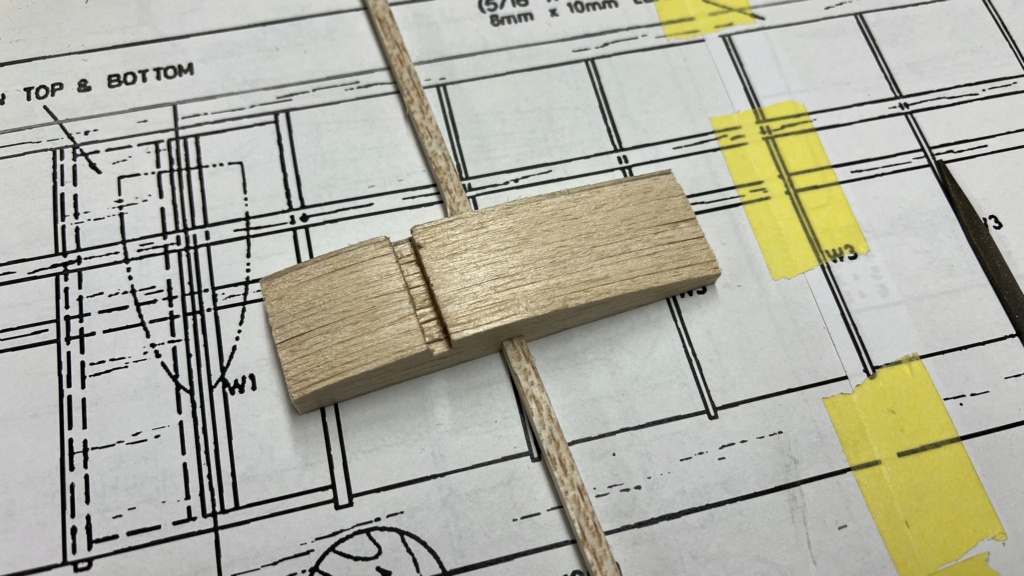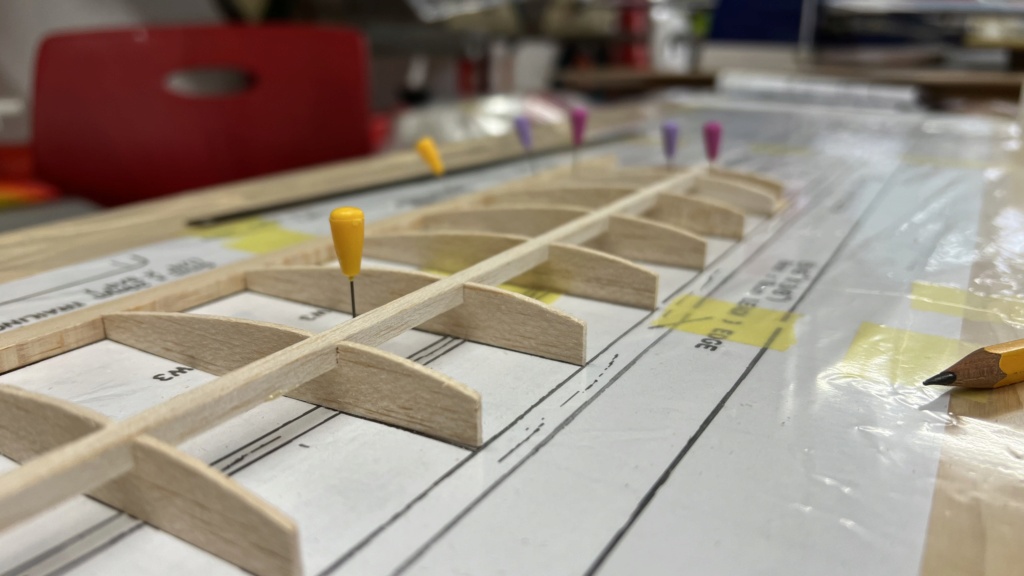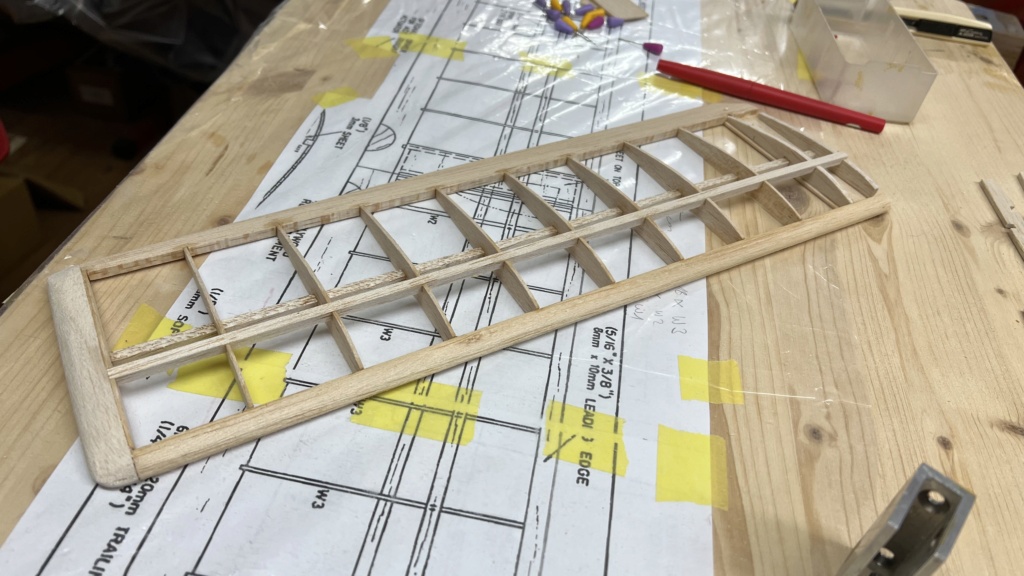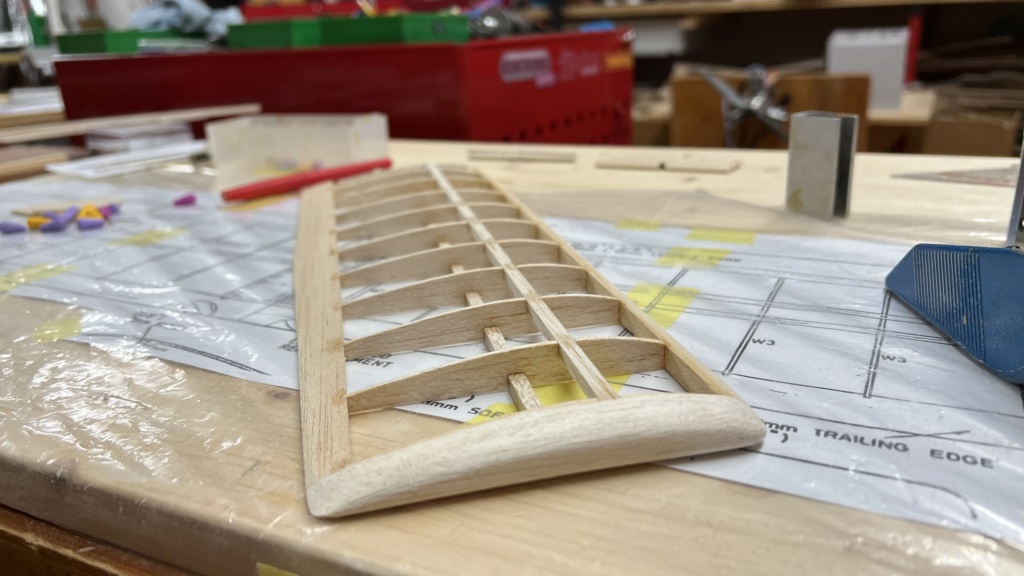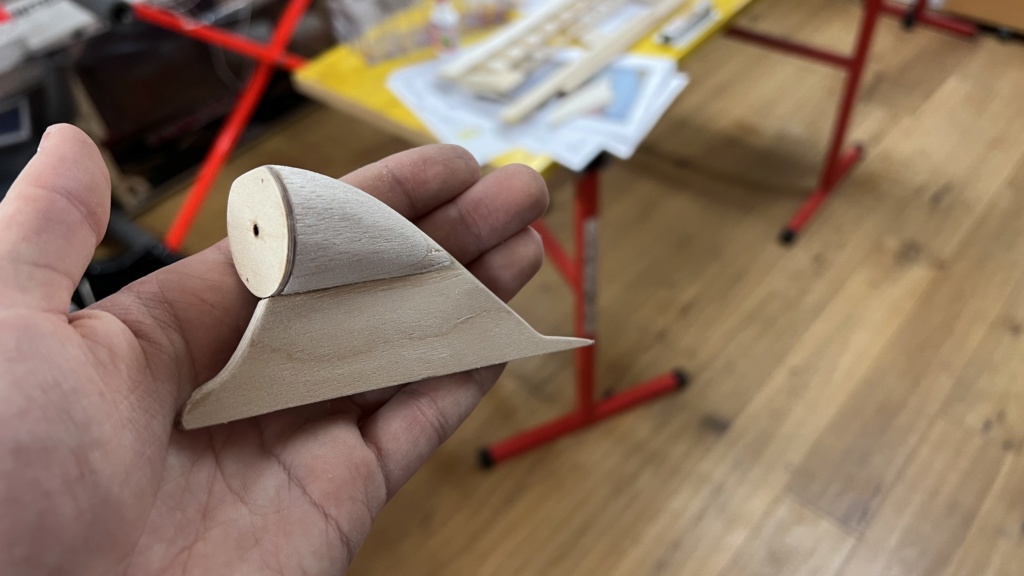Log in
Search
Latest topics
» TEE DEE Having issuesby balogh Today at 7:42 am
» Retail price mark-up.. how much is enough?
by rsv1cox Today at 7:36 am
» Cox films/videos...
by Coxfledgling Today at 4:46 am
» Purchased the last of any bult engines from Ken Enya
by Coxfledgling Today at 4:18 am
» My N-1R build log
by roddie Today at 12:32 am
» Happy 77th birthday Andrew!
by akjgardner Today at 12:27 am
» Landing-gear tips
by roddie Yesterday at 6:17 pm
» Roger Harris revisited
by TD ABUSER Yesterday at 2:13 pm
» Tee Dee .020 combat model
by Ken Cook Yesterday at 1:41 pm
» My latest doodle...
by roddie Yesterday at 10:43 am
» Chocolate chip cookie dough.........
by roddie Fri Nov 22, 2024 1:13 pm
» Free Flight Radio Assist
by rdw777 Fri Nov 22, 2024 9:24 am
Cox Engine of The Month
Pluto Build Project
Page 1 of 1
 Re: Pluto Build Project
Re: Pluto Build Project
I have not seen the actual model, but do remember when it was published in RCM. The designer, Hoh Fang-Chiun, was quite prolific and published a number of planes, mostly .15 size and down, from the late fifties to the mid-seventies in such mags as RCM, MAN, American Modeler and Aeromodeller.
Interestingly, I can remember a plane from 1975, but not if I ate breakfast today.
Interestingly, I can remember a plane from 1975, but not if I ate breakfast today.
 Re: Pluto Build Project
Re: Pluto Build Project
That is a neat looking design Tobiias, I have not seen it before…. It’s drawn with a good bit of down thrust in the engine, probably to help with wind penetration since it was rudder only….. If you are going to add the elevator I would set the engine at least on 0…. My Ace Guppy glider has an .020 on a wing pylon and I actually put a couple of degrees of “up” thrust to help with climb….I added elevator to that rudder only design as well…. Please share how nice it’s coming along when you get started 

rdw777- Diamond Member




Posts : 1718
Join date : 2021-03-11
Location : West Texas
 Re: Pluto Build Project
Re: Pluto Build Project
I love those rib constructions! I will continue your work!
The motor support is beautiful, just take into account the beta of the wood, because although it will not break when placed as the plan says, it will have more resistance and will avoid extra vibrations!
The motor support is beautiful, just take into account the beta of the wood, because although it will not break when placed as the plan says, it will have more resistance and will avoid extra vibrations!

MauricioB- Top Poster

- Posts : 3712
Join date : 2016-02-16
Age : 53
Location : ARG
 Re: Pluto Build Project
Re: Pluto Build Project
Nice, neat building Tobaiies! This should make a stable, relaxing flyer…. Durable too 


rdw777- Diamond Member




Posts : 1718
Join date : 2021-03-11
Location : West Texas
 Re: Pluto Build Project
Re: Pluto Build Project
She is looking Good Tobaiies , The wing is strong and that engine pod is very nice , merry Christmas 




getback- Top Poster



Posts : 10442
Join date : 2013-01-18
Age : 67
Location : julian , NC
 Re: Pluto Build Project
Re: Pluto Build Project
Hi Tobaiis,
Nice project. !
I notice on the plans, it looks like an escapement rudder control...
But, with a hinged small elevator? I am confused.
Back in the day, hauling heavy r/c gear was the problem.
Having that primitive r/c work, was another thing...
I would like to know the original weight...
And,
What you can do with that design with modern r/c...
I enjoy your posts,
Thanks,
Dave
Nice project. !
I notice on the plans, it looks like an escapement rudder control...
But, with a hinged small elevator? I am confused.
Back in the day, hauling heavy r/c gear was the problem.
Having that primitive r/c work, was another thing...
I would like to know the original weight...
And,
What you can do with that design with modern r/c...
I enjoy your posts,
Thanks,
Dave

HalfaDave- Platinum Member

- Posts : 615
Join date : 2022-12-06
Location : Oakville, Ontario
 Re: Pluto Build Project
Re: Pluto Build Project
Dave, back in ye olden days of yore,HalfaDave wrote:I notice on the plans, it looks like an escapement rudder control... But, with a hinged small elevator? I am confused. Back in the day, hauling heavy r/c gear was the problem. Having that primitive r/c work, was another thing...
 They had the single channel compound escapement. It could be connected to both rudder and elevator. It was something like:
They had the single channel compound escapement. It could be connected to both rudder and elevator. It was something like:- one click and hold - right rudder. (There's some madness to this setup. Plane had a tendency to naturally climb to the left under engine torque. You would occasionally blip right to keep it flying straight. Of course, you could also trim it to fly straight, but with the uncertainty of reliability of the R/C gear, at least it would circle like a free flight until fuel ran out if signal was lost.)
- two clicks and hold - left rudder
- three clicks and hold - up elevator
- four clicks and hold - down elevator.
Sometimes they'd skip down elevator, just do up to three clicks. Had a stop so only up elevator was allowed. On these, with only full up, you didn't want a wide elevator for control. The actuators were limited in power, muscle being provided by a wind up rubber band like that used on a rubber powered aircraft. Some of the larger aircraft required aerodynamic balance tabs on rudder and elevator so the actuators could effectively work without freezing or binding.
Also with the compound escapement, there was a way to wire in a simple escapement for quick blip motor control. One had a push button added to the transmitter. (I think also the single push button control could be used. I never had one of these, so I am recalling from memory the articles I read on it.)
Ken Willard's designs kitted by Top Flite all had this, the kick up elevator, even the 20" wingspan Roaring 20 (downsized Top Dawg), 27" clipped wing Schoolboy, 33" Schoolgirl, 39" Schoolmaster. (For my single channel flying using the Ace R/C rudder only, I glued the elevator to the stabilizer fixing it.)

Later when Galloping Ghost came out, they too used a smaller elevator. These planes, particularly the larger Schoolmaster lent themselves to GG control. One could send in their Ace R/C Pulse Commander single channel, and have elevator added. Through a special linkage set up, could even use the Adams Actuator to control both rudder and elevator. (I never went this extra step, had a special ordered system with quick blip sequential throttle added. With a quick blip of throttle push button, the KRD servo would cycle from high, to medium, to idle, then back to high. It added a new dimension to rudder only flying, total fun.)
I do remember in the latter 1970's, Pete's Model Hobbycraft in Kailua (other side of the Pali Pass from Honolulu), Hawaii had in its display case, the Ace R/C Pulse Commander 3 channel system with multifunction Rand motorized actuator. The actuator with only one motor could provide Galloping Ghost action to both rudder and elevator, and motor function, too. (I wanted that but its cost at the time being a college student prevented me from buying it. Then about a year later, Cannon systems was selling their micro digital proportional systems as kits under the Charlie's R/C name, which were cheaper and so I bought and built.)
At slow rates (speed at which the rudder pulsed back and forth) for up elevator control, the plane had a tendency to "gallop" (tail bob up and down, left and right, slightly under flight), hence how GG was coined, the plane sort of "galloped".
 At fast rate, the elevator was pointed down more than up, giving down elevator.
At fast rate, the elevator was pointed down more than up, giving down elevator. A disadvantage to GG was interactive action between rudder and elevator. For example, if you gave rudder control, it kicked in proportionally up elevator.
 The digital proportional R/C servo sytems, both rudder and elevator were independent. As a result and with declining radio prices, the servo systems won out.
The digital proportional R/C servo sytems, both rudder and elevator were independent. As a result and with declining radio prices, the servo systems won out.


GallopingGhostler- Top Poster


Posts : 5724
Join date : 2013-07-13
Age : 70
Location : Clovis NM or NFL KC Chiefs
 Re: Pluto Build Project
Re: Pluto Build Project
Hi gg,
Thanks for that info...
You filled in some gaps in my memories...
Appreciate that.
1/2A R/C back then, were rare around here. A challenge.
A .020 plane like the Pluto was cutting edge tech...
The 'pod' engine placement was to save busting props...
I am curious how a 'modern' Pluto will go...
Enjoying this thread,
Thanks,
Dave
Thanks for that info...
You filled in some gaps in my memories...
Appreciate that.
1/2A R/C back then, were rare around here. A challenge.
A .020 plane like the Pluto was cutting edge tech...
The 'pod' engine placement was to save busting props...
I am curious how a 'modern' Pluto will go...
Enjoying this thread,
Thanks,
Dave

HalfaDave- Platinum Member

- Posts : 615
Join date : 2022-12-06
Location : Oakville, Ontario
 Re: Pluto Build Project
Re: Pluto Build Project
You're welcome. I imagine it will fly similar to the 34 inch Ace R/C Guppy that was kitted in the 1970's and 1980's. It also had the pylon mounted .020 Pee Wee or .010 Tee Dee. I'm anticipating a flight report from @Tobaiies when completed, so far looks like good work.HalfaDave wrote:1/2A R/C back then, were rare around here. A challenge. A .020 plane like the Pluto was cutting edge tech...
The 'pod' engine placement was to save busting props... I am curious how a 'modern' Pluto will go...
Back in the 1970's, I had a total blast with the Ken Willard's 20 inch Top Flite Roaring 20 and my Pee Wee on Ace single channel rudder only. Being slightly smaller but with a low aspect ratio wing, it would stunt like crazy, much more maneuverable than my 27 inch Schoolboy by the same author.
The only thing is that these smaller airplanes are affected more by wind than the larger ones are. In Hawaii with a 15 mph or greater Trade Wind blowing most of the time, calmer weather was rare. Although I flew all half-A, I had to be very select about the times I flew, larger models on .049 and .10 were much easier to fly, handled wind better. When visiting my parents in Arkansas in the late 1970's, the North Little Rock, Arkansas weather was more or less calmer most days during the summer. It was conducive to flight like my early 1970's experiences in the Virginia Beach area.
Where I live now is less conducive to half-A flight because similar to Hawaii, we have 15+ mph winds. However, here it gets even higher than in Hawaii most year round. In that case, the .09's and up do better. The planes are slightly heavier, larger and wind penetration is better.

GallopingGhostler- Top Poster


Posts : 5724
Join date : 2013-07-13
Age : 70
Location : Clovis NM or NFL KC Chiefs
 Re: Pluto Build Project
Re: Pluto Build Project
Hi gg,
My first decent 1/2A r/c was a Dave Thornburg 'Honker'.
TD.049 hauling 22oz of mostly Heathkit radio.
I want to build one at half that weight.
Will it fly better? I do not know yet.
This is why I am following this very nice Pluto build thread...
Will it fly better around it's original weight?
Or twice as good, at half the weight?
Take care,
Have fun,
Dave
My first decent 1/2A r/c was a Dave Thornburg 'Honker'.
TD.049 hauling 22oz of mostly Heathkit radio.
I want to build one at half that weight.
Will it fly better? I do not know yet.
This is why I am following this very nice Pluto build thread...
Will it fly better around it's original weight?
Or twice as good, at half the weight?
Take care,
Have fun,
Dave

HalfaDave- Platinum Member

- Posts : 615
Join date : 2022-12-06
Location : Oakville, Ontario
 Re: Pluto Build Project
Re: Pluto Build Project
Build lighter always flies better. This is why I enjoyed my Ace R/C single channel and Cannon mini equipment back in the 1970's, with lighter battery packs, actuators, mini servos, shaved ounces off the equipment. Coupled with lightweight finish, Engine didn't have to struggle pulling plane through the air.
Greater wing incidence to generate more lift to lift a heavier plane generates more drag. Lightly built and equipped, a Honker will fly decently on a Golden Bee. Your Tee Dee especially if throttled is even better.
My Airtronics 36" Q-Tee back in the late 1970's was powered adequately by a Golden Bee. Flew it single channel with Ace R/C Pulse Commander on 72 MHz and KRD sequential auxilary quick blip throttle and an exhaust throttle ring on the Golden Bee. A year or two later, upgraded to a Charlies R/C (Charlie was Bill Cannon's wife) 4 channel Cannon kit with 2 servos (rudder and elevator, removed throttle ring from the Golden Bee). I flew it when taking breaks from my studies at the University of Hawaii.

Charlie's R/C Cannon transmitter and receiver.
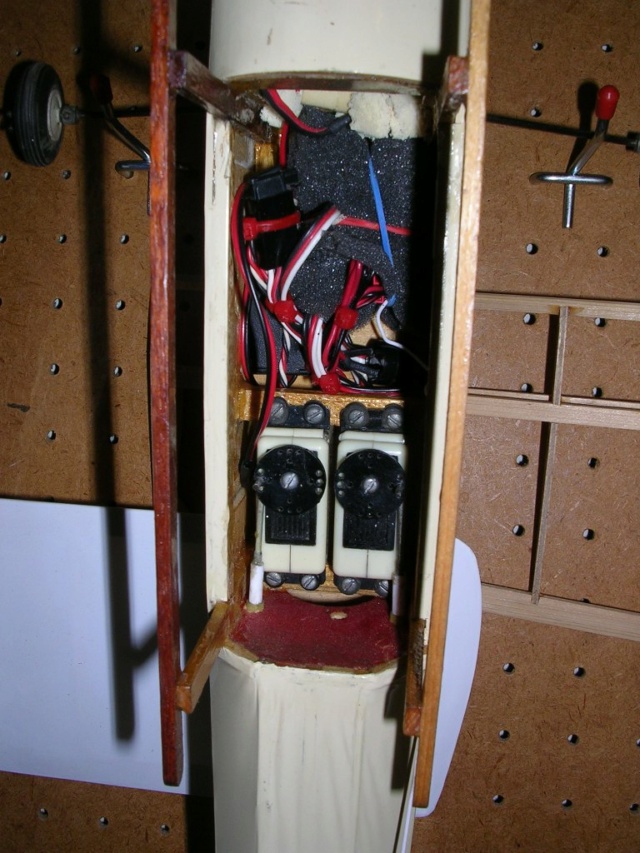
Cannon (Dunham?) mini servos with modern micro receiver in the Q-Tee.
Back in the 1990', flew it at 6,500 ft. elevation in Gallup, NM on the Golden Bee. Built light and with decent wing area, the Q-Tee still flew decently because it flies on its generous wing area. Normally at higher elevation, one would go to a higher powered engine because of the loss in engine combustion efficiency due to reduced air pressure at elevation. At sea level it is 14.7 psia. At 6,500 ft, it is 11.5 psia (about a 22% loss in power). An interesting thing I learned was how much more at higher elevations, changes in props are more dramatic than at sea level. The Q-Tee flew about the same speed at sea level whether I used a 5.25x4 or 6x3 prop. At 6,500 ft, the 6x3 was definitely the superior choice. It barely lumbered along with the 5.25x4, but moved out with the 6x3.
I crashed it (again) several years ago, destroying the fuselage nose. It will be on its 2nd major rebuild. Then, I was powering it with a Big Mig .061 using the Norvel tank mount (good for Tee Dee use also, same bolt pattern), which turned it into a very nice sport plane at this 4,300 ft. elevation (12.5 psia, about 15% loss in power).



Greater wing incidence to generate more lift to lift a heavier plane generates more drag. Lightly built and equipped, a Honker will fly decently on a Golden Bee. Your Tee Dee especially if throttled is even better.
My Airtronics 36" Q-Tee back in the late 1970's was powered adequately by a Golden Bee. Flew it single channel with Ace R/C Pulse Commander on 72 MHz and KRD sequential auxilary quick blip throttle and an exhaust throttle ring on the Golden Bee. A year or two later, upgraded to a Charlies R/C (Charlie was Bill Cannon's wife) 4 channel Cannon kit with 2 servos (rudder and elevator, removed throttle ring from the Golden Bee). I flew it when taking breaks from my studies at the University of Hawaii.

Charlie's R/C Cannon transmitter and receiver.

Cannon (Dunham?) mini servos with modern micro receiver in the Q-Tee.
Back in the 1990', flew it at 6,500 ft. elevation in Gallup, NM on the Golden Bee. Built light and with decent wing area, the Q-Tee still flew decently because it flies on its generous wing area. Normally at higher elevation, one would go to a higher powered engine because of the loss in engine combustion efficiency due to reduced air pressure at elevation. At sea level it is 14.7 psia. At 6,500 ft, it is 11.5 psia (about a 22% loss in power). An interesting thing I learned was how much more at higher elevations, changes in props are more dramatic than at sea level. The Q-Tee flew about the same speed at sea level whether I used a 5.25x4 or 6x3 prop. At 6,500 ft, the 6x3 was definitely the superior choice. It barely lumbered along with the 5.25x4, but moved out with the 6x3.
I crashed it (again) several years ago, destroying the fuselage nose. It will be on its 2nd major rebuild. Then, I was powering it with a Big Mig .061 using the Norvel tank mount (good for Tee Dee use also, same bolt pattern), which turned it into a very nice sport plane at this 4,300 ft. elevation (12.5 psia, about 15% loss in power).




GallopingGhostler- Top Poster


Posts : 5724
Join date : 2013-07-13
Age : 70
Location : Clovis NM or NFL KC Chiefs
 Re: Pluto Build Project
Re: Pluto Build Project
Like the old transmitter photo George….I like all the tricks modern transmitters can do except for the trims…The old analog trims were a lot easier to find and adjust without taking your eyes off the plane…. As opposed to fumbling with buttons….

rdw777- Diamond Member




Posts : 1718
Join date : 2021-03-11
Location : West Texas
 Re: Pluto Build Project
Re: Pluto Build Project
You're welcome, Robert. I am now looking into converting one of my legacy transmitters to 2.4 GHz. Debating between this Cannon and my Futaba 6 channel G Series that I had in the early 1980's. It had dual rates, plus as you say, the manual trim levers for the 4 basic functions, which came in handy. Dual rates was helpful when transitioning from powered flight to dead stick.
When they obsoleted wide band 72 MHz and went to narrow band, I picked up a Cirrus (Futaba stencil name for Hobby Shack) basic 4 channel no frills radio with 4 standard servos. Replaced all my G Series connectors with Futaba J. I was working with not much leisure time back in the late 1980's, so it got me by.
But, it would be charming to show up at the field with the old Cannon transmitter, and fly one of my legacy kits going back to the 1950's, like my 1959 Berkeley Impulse single channel with kick up elevator. Even though it is a basic system, it has decent sticks on it and the transmitter being very light was a joy to use.
When they obsoleted wide band 72 MHz and went to narrow band, I picked up a Cirrus (Futaba stencil name for Hobby Shack) basic 4 channel no frills radio with 4 standard servos. Replaced all my G Series connectors with Futaba J. I was working with not much leisure time back in the late 1980's, so it got me by.
But, it would be charming to show up at the field with the old Cannon transmitter, and fly one of my legacy kits going back to the 1950's, like my 1959 Berkeley Impulse single channel with kick up elevator. Even though it is a basic system, it has decent sticks on it and the transmitter being very light was a joy to use.

GallopingGhostler- Top Poster


Posts : 5724
Join date : 2013-07-13
Age : 70
Location : Clovis NM or NFL KC Chiefs
 Similar topics
Similar topics» Spee-Dee 010, a new build project
» Guillows Cessna 150 build circa 1970 (Build Log)
» Dick Russ' 1/2A Streaker, my build project
» Tigercat RC pylon racer build project
» The Breezy Hill / EAA Chapter 1635's "Build and Fly Project"
» Guillows Cessna 150 build circa 1970 (Build Log)
» Dick Russ' 1/2A Streaker, my build project
» Tigercat RC pylon racer build project
» The Breezy Hill / EAA Chapter 1635's "Build and Fly Project"
Page 1 of 1
Permissions in this forum:
You cannot reply to topics in this forum

 Rules
Rules










